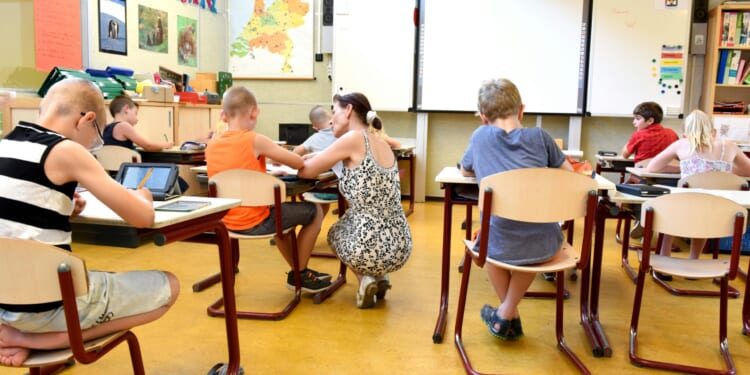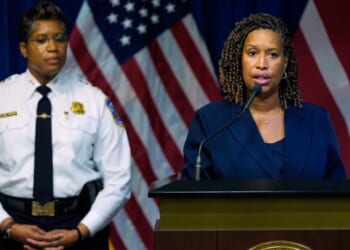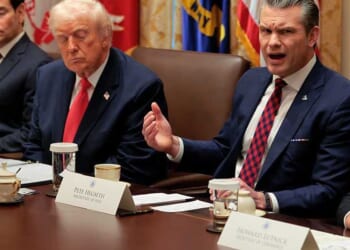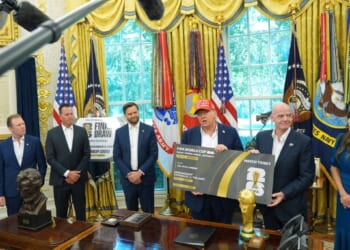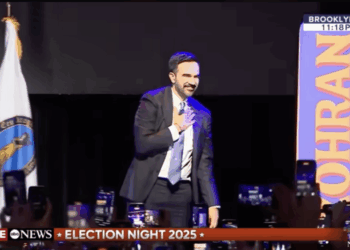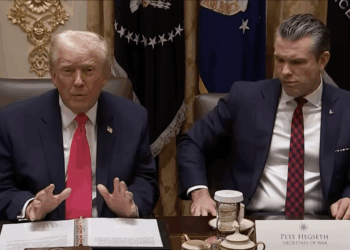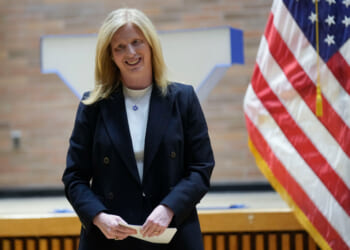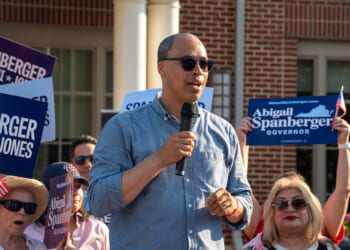Robert Pondiscio had a superb piece recently that’s circulating widely, both on the left and the right. In it, he points out that many public school teachers are trained to see themselves as agents of societal change. The examples he gives are almost exclusively liberal or left-wing: teachers as “change agents” challenging alleged “systems of oppression” to “transform society,” commit to “diversity,” and adopting a “social justice orientation” that turns the classroom into a “platform for identity.” He also chides as equally-misguided recent Republican responses attempting to, as he sees it, fight fire with fire.
Besides the most fundamental and correct point of his piece — that humility is a necessary virtue for teachers — Pondiscio suggests that teachers (and policymakers) should aim above all for neutrality. But, I’d argue, this is mistaken. Properly understood, public schools are not, cannot, and, in fact, should not be neutral.
A Brief History Lesson
In the summer of 1787, the Constitutional Convention was drafting a new form of government in Philadelphia. At the same time, the original U.S. Congress was still governing, and on the 13 of July they passed the Northwest Ordinance to govern much of what is now the American Great Lakes region. Besides facilitating the orderly transfer of federal lands to American farmer-settlers and outlawing slavery, the Northwest Ordinance established that “Religion, morality, and knowledge, being necessary to good government and the happiness of mankind, schools and the means of education shall forever be encouraged.”
To support the education of American children, the Northwest Ordinance built upon the Land Ordinance of 1785 which had guaranteed a plot of land in each township to be set aside “for the maintenance of public schools.” Public education dated back to colonial New England, but this marked a national prioritization of the institution. Indeed, the Land Ordinance made public education “go national.” Since then, public schooling has been as American as apple pie. We have the American founders to thank.
Why did they do this?
To teach those things (in this case, “religion, morality, and knowledge”) “necessary to good government.”
Pondiscio rightly echoes this purpose for public education, arguing that teachers are “not to change society but to sustain it,” and “to transmit the shared knowledge, language, habits, and civic norms upon which self-government depends [emphasis added].” Teachers must acknowledge “that their authority rests not on self-expression, but on self-restraint [emphasis added].” Indeed, as Pondiscio says, “Public schools are not platforms. They are civic institutions.” Public schools are the government and teachers are “state actors.”
Which brings us back to the present purpose of America’s public schools: to provide education that is necessary for citizens to have a “good government,” to “sustain” society, to “transmit” that “upon which self-government depends.” In other words, the very raison d’être of America’s public schools is to support the government, i.e., the government established by the U.S. Constitution and the principles and civic norms upon which it rests.
Fast Forward
Pondiscio’s abovementioned laundry list of current left-wing ideology examples are, as he notes, inherently opposed to the purpose of public schools. This is a long-overdue though simple-enough recognition, and I’m grateful Pondiscio says as much, especially to an audience with many liberal readers. (I’d also remind my right-of-center friends that they need to stop regarding public schools as “left-wing” and, therefore, a lost cause.)
But even more important is that these left-wing examples are also opposed to what public schools are supposed to be supporting, that is, the U.S. Constitution and America’s founding principles. And in this case, there is only one political philosophy (or ideology) that is actually conducive to the nature and goals of public education, and that is conservatism.
For one, the disposition of the teacher Pondiscio argues for is fundamentally a small-c conservative one: sustaining, transmitting, and self-restraining. These are all conserving something, not changing or progressing something.
Second, we can argue about when this happened, but at present, the Democratic Party and most liberals generally will not dispute that they think the American founding was, at the very least, seriously misguided. Many will go further and say it was morally evil and unjust, and that the great bulk of America’s past follows suit.
I for one can attest to the great failings of the Republican Party to sustain in practice the U.S. Constitution and American founding, but at least in principle Red States claim to uphold as much. But when it comes to what teachers are being told their roles are in America’s teacher prep programs, those left-wing ideas are simply incompatible with the purpose and work of America’s public schools.
The current left-wing ideological capture of America’s public school system is not necessarily new. One can go back to the origins of Progressive education in the Progressive movement, which actively rejected the American founding (or at least the founders’ interpretation of what the founders themselves had created) and make the case that, for much of the last century, America’s public schools have been usurped and aimed against the very regime they were created to support.
But in the effort to de-politicize America’s schools, we need clarity on what their purpose is. America’s public schools, by their nature, cannot promote left-wing ideology. By their definition and history, public schools are conservative government institutions, and the only “ideology” currently aligned with that purpose is found on the right, not the left.
Steer clear of contemporary partisan issues public schools should. Schools shouldn’t tell students that Trump is good or abortion is bad or anything of that sort. Teachers can still play devil’s advocate in history, including on the American founding (“What about the fact that some of the Revolution’s leaders were bona fide smugglers?”). Nor should — nor can — schools make students assert any particular thing as true (i.e., tell them what to think).
But in rejecting left-wing ideology that is openly advocating for the inherent injustice of America and its radical transformation, public schools must not stop at teaching students merely how to think as if content and expectations don’t matter. They must make sure there are certain things about which students must think and study. Students must draw their own conclusions, but at the end of the day, the school should have a stance, with which students are free to agree or disagree: that the American founding and U.S. Constitution are good and true, and that America is the exception to the rule in history and worthy of our knowledge, love, and defense.
If this view of America overlaps with “right-wing ideology” today, so be it.
Properly understood, public schools are not neutral.
Properly understood, they are, by their very nature, conservative.
It’s incumbent upon Red State leaders, especially, that they expect their public, taxpayer-funded schools to start acting like it.
This article was originally published on the author’s Substack, “Red State Ed Reformer” and has been lightly edited for style.

